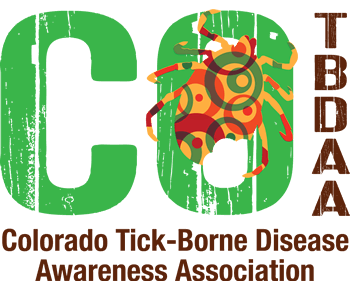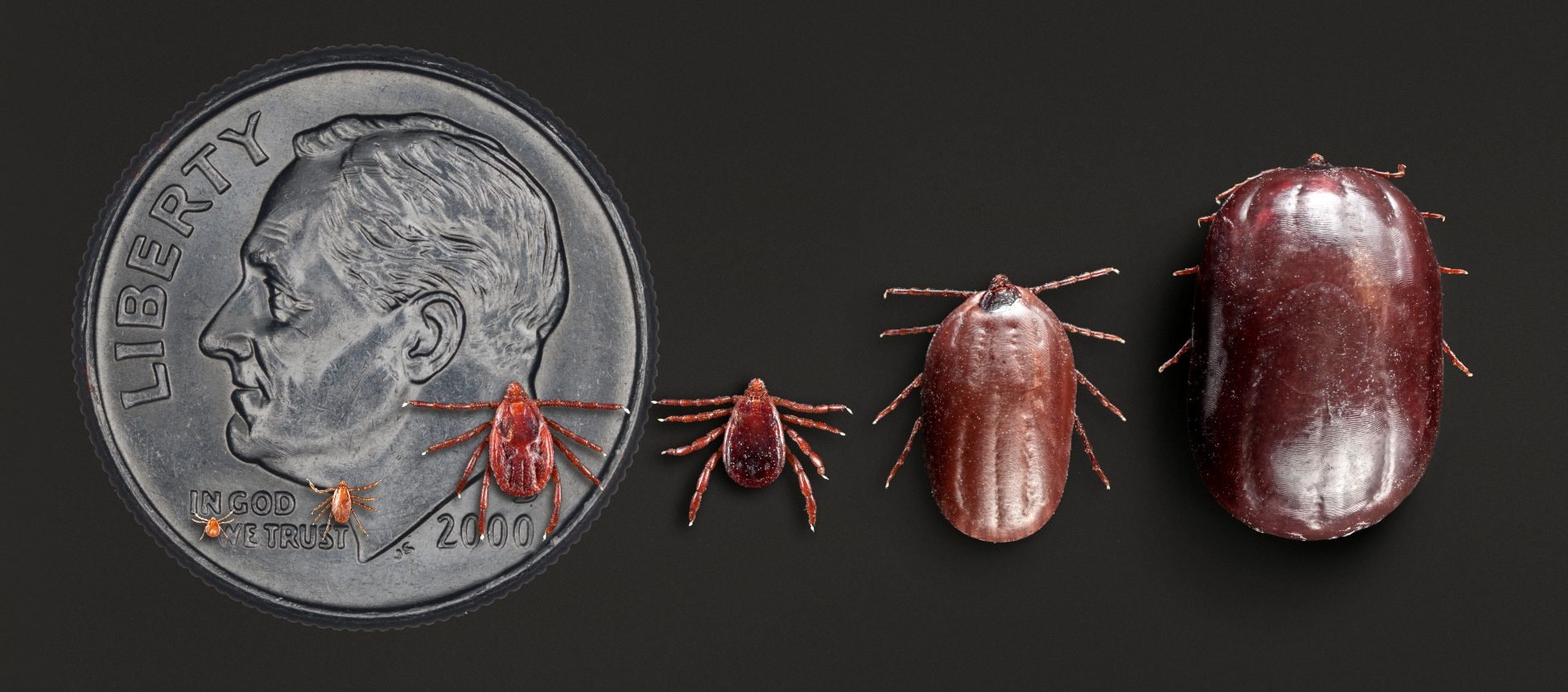
Brown dog tick
Brown dog tick
Rhipicephalus sanguineus
Distribution
This “species” of hard tick has a cosmopolitan distribution, including collection records from every state in the USA, via its association with domestic dogs. Recent studies suggest it is actually a complex of multiple species, some of which have not yet been described. In CO, this tick may be associated with domestic dogs recently brought in from out-of-state, but established local infestations may persist indoors anywhere (e.g., kennels). This tick is unusual in that it is able to complete its entire life cycle indoors and has been shown to imbibe water directly, rather than having to use saliva to gather moisture from the air, as do other tick species. Unlike most other hard ticks, eggs of this tick are laid inside or near housing areas of animals (kennels), and in cracks and crevices of buildings, rather than outside under vegetation.
Hosts
In the US, host species are primarily dogs, but occasionally other mammals, including humans. Outside the US, this tick commonly infests a variety of domestic and wild mammals.
Vector Status
In addition to causing tick paralysis in dogs, they are vectors of multiple canine and human disease agents. Disease agents allegedly transmitted by this tick include those causing canine ehrlichiosis, canine babesiosis via multiple Babesia spp.; canine hepatozoonosis, Hepatozoon canis (Hepatozoidae); haemotropic mycoplasmosis, Mycoplasma haemocanis (Mycoplasmataceae) (experimental transmission only); Q Fever; tularemia; babesian and theilerian equine piroplasmosis; Mediterranean spotted fever, Rickettsia conorii; and another spotted fever, R. massiliae. Populations of brown dog ticks in Arizona and adjacent northwestern Mexico are uniquely known vectors of the agent of Rocky Mountain Spotted Fever to humans, especially on reservation lands.
Resources
H Joel Hutcheson, James W Mertins, Boris C Kondratieff, Monica M White, Ticks and Tick-Borne Diseases of Colorado, Including New State Records for Argas radiatus (Ixodida: Argasidae) and Ixodes brunneus (Ixodida: Ixodidae), Journal of Medical Entomology, tjaa232, https://doi.org/10.1093/jme/tjaa232
Centers for Disease Control and Prevention
Colorado Department of Public Health and Environment webpage and personal communication, with Dr. Leah Colton (former CDPHE, Entomological Epidemiologist).
American dog tick distribution in Colorado: 2014-2019

Brown dog tick distribution in US: 2019









